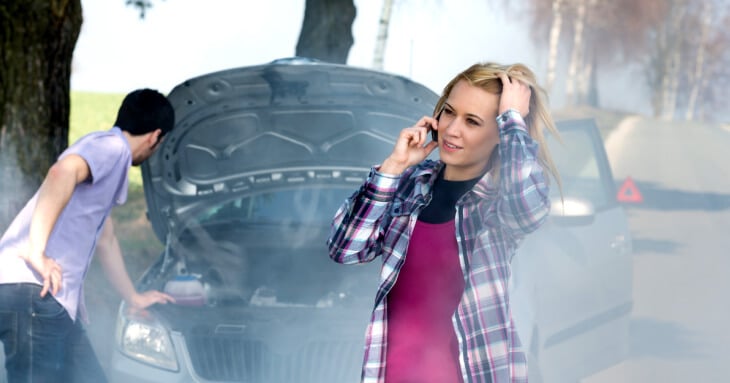It can be a good idea to consider having a roadside assistance plan when you get a flat tire or when your car battery dies. Roadside plans offered by car insurance providers are usually cheaper than those provided by motor clubs. Some insurance companies even provide roadside assistance at no cost.
How can several claims affect auto insurance?
It’s not likely that an insurance company will raise or drop the rate of a consumer if he or she files a claim or two claims in a year. However, several multiple roadside assistance claims within a short period can put a driver under scrutiny.
Multiple claims within a short period can make an insurance company raise your insurance rates or even worse, drop you altogether. According to ConsumerReports.org, some of the car insurance providers out there report roadside assistance claims to Choice Point, an Alpharetta, and GA based company which usually deals with the collection of claims information for the auto insurance industry.
If a person has multiple claims, then Choice Point can collect this information and auto insurance may end up viewing this information. State rules vary in regards to whether and how a provider is allowed to penalize a person for making a claim. However, making multiple claims within a short period could make some insurance providers raise your rates.
Whenever a policyholder files a claim, insurance providers look at the severity, frequency and who is at fault. Roadside assistance claims are not severe, but if they are frequent, then your provider will know that your car is not very stable.
Can you lose coverage for excessive roadside claims?
It is difficult to answer this question as insurance providers combine claims information with several other factors when determining who to cover and at what rates. These factors include the driver’s vehicle, sex, city, and age and credit history.
To be on the safe side, contact your insurance agent to check if multiple roadside assistance claims can affect your rates or coverage. Even if car insurance providers do not penalize those drivers who make several claims, most of the policyholders should worry about using roadside assistance services offered by their insurance provider. So, when they experience a minor problem such as having a flat tire, they try solving the problem by themselves to prevent any assistance from going on their record. Those people end up spending more money than necessary which doesn’t make financial sense.
Cons of car insurance roadside assistance
Not only is there a possibility that your rates will increase with multiple claims, roadside assistance plans offered by auto insurance companies usually cover the vehicle and not the driver. Therefore, those drivers with this type of coverage can’t contact their insurance provider for roadside help if they drive a friend’s vehicle and it breaks down.
In contrast, roadside assistance plans from Best Roadside Service offer plans that follow the person. This means that a member can call for assistance regardless of the type of vehicle he or she is traveling in. For example, if a teenager is covered under a roadside assistance plan that covers the driver and not the vehicle, then the teenager could get roadside assistance services even if he or she does not own the vehicle.
Don’t get stuck in a situation that you will regret. People who end of depending on roadside assistance from their insurance provider could cost you more money in the long run. Be financially smart and sign up with Best Roadside Service.
If you have roadside assistance coverage, help is as close as one call away. Purchasing a plan through Best Roadside Service includes fuel delivery in the event you run out of gas. One quick call to a 24/7 emergency hotline will have a service provider ready to assist you, and with an average response time of just 34 minutes, you will be back on the road in no time.





